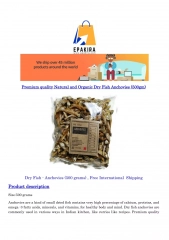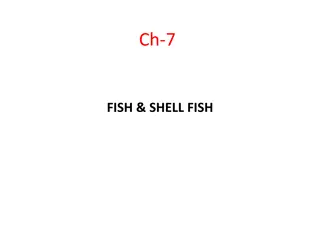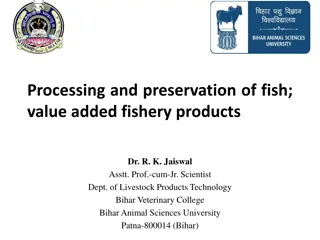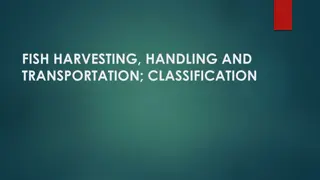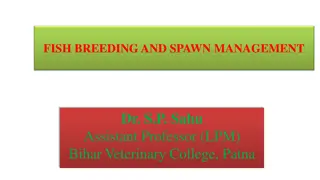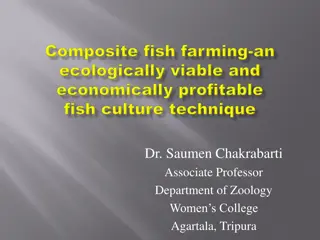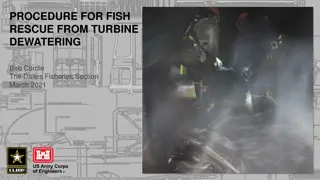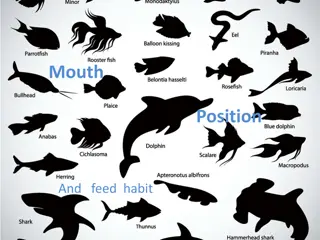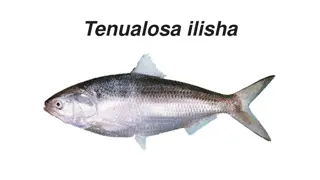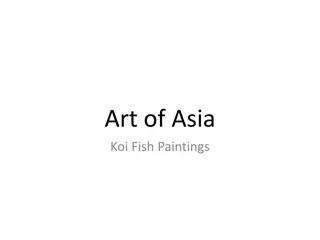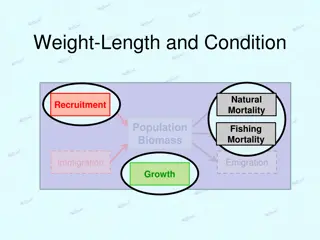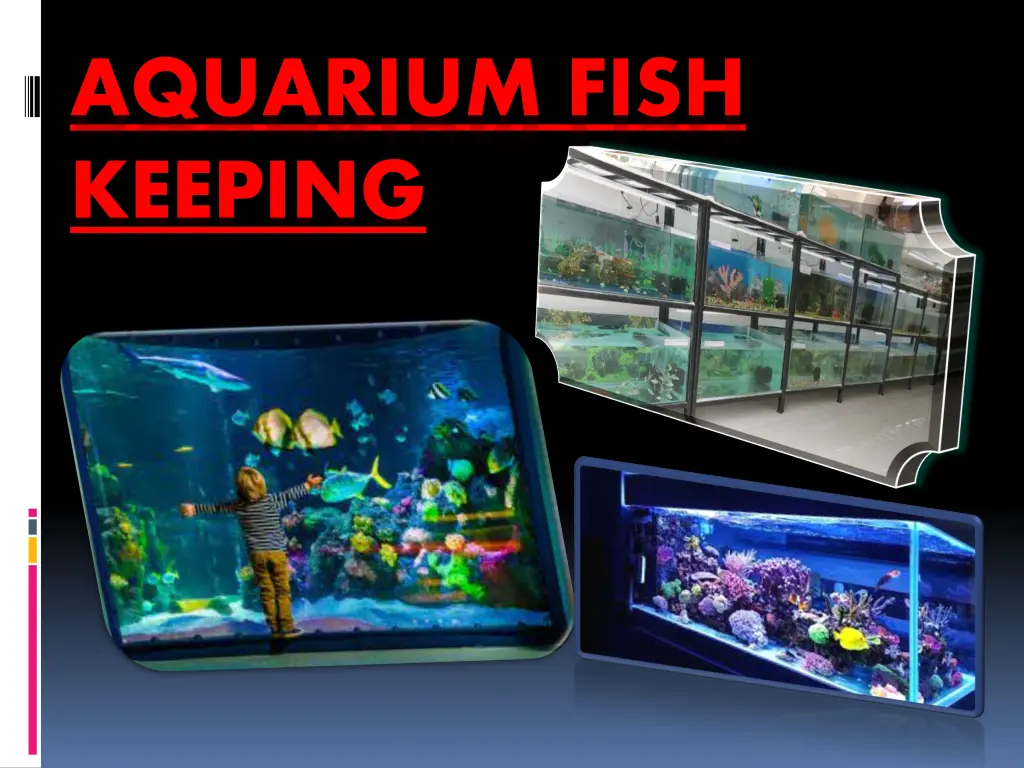
Discover the Fascinating World of Aquarium Fish Keeping
Delve into the captivating realm of aquarium fish keeping with insights on common types of aquariums, fish transportation, and fish classification. Explore different varieties of fish tanks and learn about the methods used in fish transportation.
Download Presentation

Please find below an Image/Link to download the presentation.
The content on the website is provided AS IS for your information and personal use only. It may not be sold, licensed, or shared on other websites without obtaining consent from the author. If you encounter any issues during the download, it is possible that the publisher has removed the file from their server.
You are allowed to download the files provided on this website for personal or commercial use, subject to the condition that they are used lawfully. All files are the property of their respective owners.
The content on the website is provided AS IS for your information and personal use only. It may not be sold, licensed, or shared on other websites without obtaining consent from the author.
E N D
Presentation Transcript
AQUARIUM FISH KEEPING
An aquarium (plural aquariums or aquaria) is a vivarium, usually contained in a clear-sided container (typically constructed of glass or high-strength plastic) in which water-dwelling plants and animals (usually fish, and sometimes invertebrates, as well as amphibians, marine Fishkeeping is a popular hobby, practiced by aquarists, concerned with keeping fish in a home aquarium or garden pond. ammals, and reptiles)..
COMMON TYPES OF AQUARIUMS YOU CAN CHOOSE FROM: -Community aquariums. Community aquariums contain fish from different regions and include plants that have good stamina. -Goldfish aquariums. ... -Planted aquarium. ... -Freshwater fish aquarium. ... -Saltwater fish aquarium.
Gold fish aquarium Planted Planted aquarium aquarium
Fresh water Fresh water fish fish auarium auarium Salt water Salt water fish fish aquarium aquarium
Components of aquarium Components of aquarium
Classification of Weeds Classification of Weeds Fishes Grasscarp Common carp Cyprinus carpio Gaurami Pearl spot Etroplus suratensis Names Ctenopharyngodon idella Osphronemus goramy
TRANSPORTATION OF FISHES TRANSPORTATION OF FISHES Fish Transportation is a process by which fish is transported from one place to another place in a scientific way. It plays an important role in the distribution of quality fish fry among a country or even the world. transported in containers such as cans of different sizes, pots of ceramic or metal, wooden or metal buckets, vats, barrels, plastic bags, styrofoamboxes, bottles, jugs, animal skins and bamboo sections. In fact, almost any clean, waterproof container may be used..
TYPES OF FISH TRANSPROT Methods of Packing and Transport. Transport carriers are of two types: (a) (a) open system comprising open open system comprising open carriers, with or without artificial carriers, with or without artificial aeration/ oxygenation/ water aeration/ oxygenation/ water circulation circulation and and ( (b) closed system b) closed system having sealed air tight having sealed air tight carriers with carriers with oxygen. oxygen.
fish and fish products are transportedon foot, by bicycle, canoe, motorcycle, rail, pick-up truck, boat, lorry, refrigerated truck, on ships in reefer containers, and by air. Live fish, fresh fish, frozen fish, dried, smoked, canned and all other types of product experience some form of transportation. Open Open system system
The closed systems are represented bypolyethylene bags and other sealed transport units. Closed Closed system system
Seeds production Seeds production Fish seed production includes egg to spawn production for 3 days, spawn to fry nursing for 15-20 days, fry to fingerling rearing for 60-90 days and fingerling to yearling rearing for 8-9 months In past decades the major source of seed were from wild catch from natural water bodies such as rivers, streams, estuaries and sea.
SEXUAL DIAMORPHISM Sexual dimorphism also occurs in hermaphroditic fish. These species are known assequential hermaphrodites. In fish, reproductive histories often include the sex-change from female to male where there is a strong connection between growth, the sex of an individual, and the mating system it operates within.

